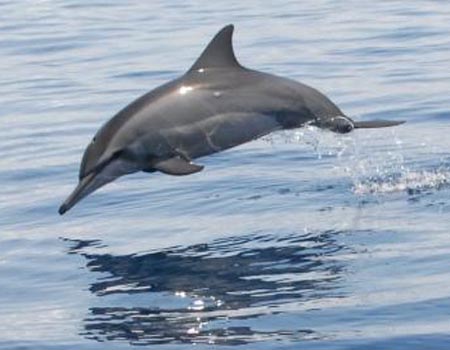New species of humpback dolphins identified
 New York - You may be familiar with humpback whales. Now meet the humpback dolphins!
New York - You may be familiar with humpback whales. Now meet the humpback dolphins!
Scientists examining a taxonomically confused group of marine mammals have officially named a species new to science: the Australian humpback dolphin.
The newly named Australian humpback dolphin - Sousa sahulensis - is one of four recognised species of humpback dolphin. It is gray in colour and has a characteristic "cape" pattern on its back.
The Humpback dolphins is a widespread group of coastal cetaceans ranging from the coast of West Africa to the northern coast of Australia.
"The formal recognition and naming of a new species brings with it a need to formulate or update plans for protection of these dolphins," said Dr Howard C Rosenbaum, Director of Wildlife Conservation Society (WCS)'s Ocean Giants Programme.
"Humpback dolphins throughout their range are threatened with fisheries interactions, vessel impacts, and development in their coastal habitats. Efforts to protect humpback dolphins and other coastal dolphins, and their most important habitats are essential for the survival of these species," said Rosenbaum.
The humpback dolphins in particular have vexed researchers and taxonomists for decades.
In recent years, scientists have disagreed with one another about the number of species, with some considering all humpback dolphins the same species and others postulating as many as nine different ones.
The new study contains detailed reviews and descriptions of the currently recognised four humpback dolphin species, using external and skeletal measurements, colouration, molecular genetics, and geographic distribution.
The Australian humpback dolphin species joins the current assemblage of three other closely related species: the Atlantic humpback dolphin (Sousa teuszii), the Indo-Pacific humpback dolphin (Sousa chinensis), and the Indian Ocean humpback dolphin (Sousa plumbea).
The new dolphin's scientific name - Sousa sahulensis - is derived from the Sahul Shelf, an underwater shelf stretching between northern Australia and southern New Guinea, where the Australian humpback dolphin occurs.
Aside from slight differences in overall length, number of teeth and vertebrae, and geographic distribution, the Australian humpback dolphin differs in appearance from the other three humpback species.
The study appears in the journal Marine Mammal Science. (PTI)